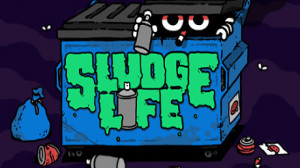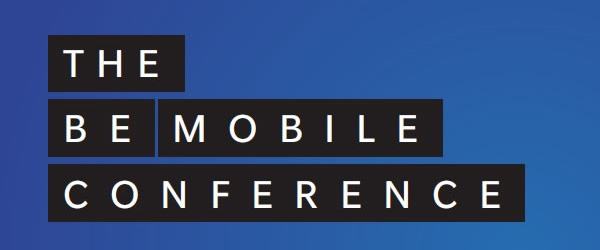Rafael C. Teske
Shared posts
SLUDGE LIFE (Steam) Giveaway
A Sunlike Star Found With Four (No, Five!) Exoplanets Orbiting It
In just nine months (October 31st, 2021), NASA’s long-awaited James Webb Space Telescope (JWST) will finally be launched to space. Once operational, this next-generation observatory will use its powerful infrared imaging capabilities to study all kinds of cosmological phenomena. It will also be essential to the characterization of extrasolar planets and their atmospheres to see if any are habitable.
In anticipation of this, astronomers have been designating exoplanets as viable candidates for follow-up studies. Using data from the Transiting Exoplanet Survey Satellite (TESS), an international team led by MIT researchers discovered four new exoplanets orbiting a Sun-like star about 200 light-years from Earth. This system could be an ideal place for James Webb to spot a habitable planet.
The study that describes the team’s findings (which was led by Tansu Daylan of the MIT Kavli Institute for Astrophysics and Space Research) recently appeared in The Astronomical Journal and was also the subject of a presentation made at the 237th meeting of the American Astronomical Society. Due to pandemic restrictions, this year’s AAS meeting was a virtual event that took place from Jan 10th – 15th online.

Four, No, Five Planets!
The team found the four-planet system when examining HD 108236 – aka. TESS Object of Interest 1233 (TOI -1233) – a G-type (yellow dwarf) star located 210 light-years from Earth. After combining TESS transit data with reconnaissance, Doppler spectroscopy, and high-resolution imaging from ground-based telescopes, they determined that a system of no less than four planets orbited this star.
These include a large, rocky inner planet (aka. a super-Earth) and three gaseous outer planets that are slightly smaller than Neptune (mini-Neptunes). Compared to the Solar System, all five planets orbit very closely to their Sun – ranging from 0.046 AU to 0.14 (4.6 to 14% the distance between Earth and the Sun) – and have orbital periods of just under four days to nineteen and a half.
As a result, Daylan and his team estimate that they experience surface temperatures ranging from 370 to 815 °C (700 to 1,500 °F). A day later, another international team announced the discovery of a fifth exoplanet using data from the ESA’s CHaracterising Exoplanet Satellite (CHEOPS). This planet is another Super-Earth that orbits rather closely to its parent star (0.17 AU) and has orbital period of 29 days.
Therefore, it’s unlikely any of them could host life (as we know it), but the planets remain a viable candidate for follow-up observations. Because all four planets in this system have short orbital periods, it will give astronomers plenty of opportunities to study them closer when they pass in front of their star (aka. transit) relative to observatories.

Candidates for Future Study
Like its predecessor, the Kepler Space Telescope, TESS observes stars for periodic dips caused by transiting planets (aka. the Transit Method). This method is currently the most effective means of detecting exoplanets and can also yield reliable information on their orbital periods and size. In addition, it can also yield information on an exoplanet’s atmosphere.
This occurs when light from a star passes through a planet’s atmosphere relative to the observer, which can provide spectra that astronomers can use to determine its chemical composition. In short, this data can reveal whether or not a planet has an atmosphere that includes oxygen, water vapor, carbon dioxide, methane, etc., and is therefore capable of supporting life as we know it.
Although TESS doesn’t have the necessary instrumentations to characterize atmospheres, the telescope plays a very important role in exoplanet studies. Like its predecessor, the Kepler Space Telescope, TESS is responsible for identifying exoplanets that will atmospheric study by higher-resolution telescopes (like NASA’s Hubble Space Telescope) and next-generation telescopes like JWST, the Nancy Grace Roman space telescope, and others.
Given its proximity to Earth, TOI-1233 appears particularly bright in the night sky compared to other stars at a similar distance. In fact, it is the brightest Sun-like star in proximity to the Solar System and will provide ample light for its system of exoplanets, which means astronomers will have a better chance of obtaining spectra.

As Daylan explained, this makes TOI-1233 an ideal case for observations using next-generation instruments:
“With multi-planetary systems, you’re kind of hitting the jackpot. The planets originate from the same disk of matter around the same star, but they end up being different planets with different atmospheres and different climates due to their different orbits. So, we would like to understand the fundamental processes of planet formation and evolution using this planetary system, which acts as a controlled experiment.”
In particular, multi-planet systems (especially those orbiting Sun-like stars) present opportunities for astronomers to learn more about how our own system of planets formed and evolved over time. Given the speed at which the five planets were discovered, it’s also possible that TOI-1233 has even more planets just waiting to be discovered, maybe even ones orbiting within its habitable zone (HZ).
With the James Webb scheduled to launch this coming October, we won’t have to wait long to find out!
Further Reading: MIT News, The Astronomical Journal
The post A Sunlike Star Found With Four (No, Five!) Exoplanets Orbiting It appeared first on Universe Today.
Xbox Live sees growth but hardware dips in Microsoft's Q3
AMD forms separate Radeon graphics division
4 lessons that 30+ years of software development has taught me about building games
 "I've learned some valuable lessons, many of which are surprisingly relevant to game development, as different as that is from the 'serious' side of software. I'd like to share a few relevant lessons." ...
"I've learned some valuable lessons, many of which are surprisingly relevant to game development, as different as that is from the 'serious' side of software. I'd like to share a few relevant lessons." ...
Altschool Raises $100M To Scale A Massive Network of Schools Around Personalized Learning
“The move will mark the company’s shift from proving out its ideas around personalized education through building its own schools to sharing or licensing its individualized learning model with other educators that want to adopt its approach. It’s an ambitious and major test as to whether Altschool’s model can be done affordably and accessibly at scale in other parts of the country.”
via TechCrunch.
The Conservation of Energy Is a Principle Worth Honoring. Let’s Start by Installing Triple-Pane Windows
Rafael C. TeskeKISS.
Texas considera prejudiciais os livros que contenham “alterações climáticas”
Rafael C. TeskeRednecks <3
Texas, com aqueles suculentos cataventos geradores de energia eólica e as cheerleaders mais lindas do mundo, nós te amamos. Mas isso não se faz. Como assim você vai e nega as mudanças climáticas?
Vários veículos estão noticiando que o conselho de educação do estado norte-americano está considerando usar livros no ensino médio que ensinam, erroneamente, aos alunos que existe discordância científica sobre a causa das mudanças climáticas. Algumas das informações sendo inclusive atribuídas a uma organização conhecida por usar a negação do aquecimento global como posição política.

Ciência ruim: 97% dos cientistas que estudam o clima concordam que as emissões de gases de efeito estufa pelo homem impulsionou as mudanças climáticas. Mas esta seção de um livro a ser analisado pelo conselho estadual de educação do Texas coloca a ciência em pé de igualdade com a ideia desacreditada que as mudanças são resultado apenas de “causas naturais”.
Alguns dos artigos analisados continham afirmações como:
- “Os cientistas concordam que o clima da terra está mudando. Eles não concordam sobre a causa”.
- Sobre a causa primária das mudanças climáticas, a emissão de gases do efeito estufa, “Muitos cientistas discordam do IPCC sobre esse problema”.
- “Alguns cientistas dizem que é normal a Terra ficar mais quente por alguns anos. Eles acham que teremos alguns anos mais frios no futuro”.
O relatório também aborda uma seção onde o texto confunde as causas da mudança climática com aquelas que causam o buraco na camada de ozônio (e nem isso descreve direito):
- “A queima das florestas e dos combustíveis fósseis (gasolina, óleo e gás) liberam dióxido de carbono para a atmosfera. Os buracos na camada de ozônio deixam a luz do sol passar e ela fica presa por causa da poluição, sendo absorvida e aquecendo a atmosfera terrestre”. O.o
A escolha de livros didáticos é assunto sério para os norte-americanos, pois são a base para o formação dos futuros cidadãos, inclusive sobre posições políticas que eles podem vir a ter. O que eles estão julgando são livros com erros factuais, além de textos propositalmente vagos e superficiais. E isso não se faz. Ciência não deve ser ensinada assim.
No Brasil, o MEC é responsável por selecionar os livros que são usados nas escolas do país inteiro. Como andam os livros que os seus filhos estão usando?
Fonte: PS.
The post Texas considera prejudiciais os livros que contenham “alterações climáticas” appeared first on Meio Bit.
Criadores do Surgeon Simulator lançam jogo sobre matemática

Depois de fazer bastante sucesso com o Surgeon Simulator, título que pode ser tão hilário quanto bizarro, o pessoal da Bossa Studios lançou a sua mais recente criação e aqueles que esperavam algo na mesma linha do “simulador” provavelmente ficarão um pouco surpresos com o Twelve a Dozen.
Desenvolvido através de uma parceria com a Amplify, o título para iPad tenta misturar entretenimento com educação, permitindo que adolescentes entre 11 e 14 anos possam aprender matemática enquanto se divertem.
Nele controlaremos uma personagem chamada Twelve, que após ver a cidade de Dozenopolis ser destruída, parte em uma aventura para salvar aqueles que viviam com ela por lá. Para cumprir a missão, o jogador terá que solucionar alguns quebra-cabeças envolvendo contas e conforme fizer isso, ganhará acesso a poderes, como andar no teto ou mergulhar.
“Cada vez que mostramos um dos nossos jogos a pessoas de vários estilos de vida, ouvimos a mesma coisa, ‘como posso conseguir isso para meu filho?’”, declarou, Joel Klein, CEO da Amplify, ao falar sobre o primeiro jogo que passaram a vender. “Então decidimos ver se as pessoas são tão loucas sobre esses jogos quanto nós somos. Se o lançamento comercial do Twelve a Dozen for bem recebido, iremos considerar fazer com que outros dos nossos jogos sejam disponibilizados aos consumidores também.”
Disponível na App Store por US$ 4,99, o Twelve a Dozen possui 30 níveis e a promessa é de que mais fases sejam adicionadas gratuitamente, parecendo realmente uma ótima maneira de fazer com que as crianças se interessem por uma das disciplinas mais temidas nas escolas.
Fonte: Amplify.
The post Criadores do Surgeon Simulator lançam jogo sobre matemática appeared first on Meio Bit.
Open letter to the gaming community

I am a signatory to this letter. I think everyone should be. I think it should be pretty non-controversial, actually.
We believe that everyone, no matter what gender, sexual orientation, ethnicity, or religion has the right to play games, criticize games and make games without getting harassed or threatened. It is the diversity of our community that allows games to flourish.
If you see threats of violence or harm in comments on Steam, YouTube, Twitch, Twitter, Facebook or reddit, please take a minute to report them on the respective sites.
If you see hateful, harassing speech, take a public stand against it and make the gaming community a more enjoyable space to be in.
Thank you
Open letter to the gaming community — Medium.
Are Fish As Intelligent As Crows, Chimps... Or People?

Whether they're caught in the wild or raised in captivity, fish are a major food souce worldwide. Nearly 5 billion people worldwide got 15 percent of the animal protein in their diets from fish in 2011; for another 2.9 billion it was 20 percent. In 2011, that added up to about 132.3 million metric tons of fish.
But the welfare of fish—which are vertebrates just like cows, pigs, and chickens, and possessing evolutionary lineages as long as those of homo sapiens—has been barely discussed. As a result “the potential amount of cruelty we're inflicting is mind-boggling,” says fish biologist Culum Brown, an assistant professor at Macquarie University in Australia. “People need to have a greater appreciation of how smart fish are,” he says. “Just because we're ignorant is no excuse to treat another animal poorly. All the evidence suggests that they're just as sophisticated as other vertebrates.”
Brown makes a scientific case for reform in “Fish intelligence, sentience and ethics,” a paper published in the June 2014 issue of Animal Cognition. The work was partially funded by the organization Farm Sanctuary, under its "Someone, Not Something" project.
Brown reviewed nearly 200 research papers on fish sensory perception, natural cognitive abilities (including “numerality,” or an ability to assess quantity), and abilities to perceive and experience pain, and found ample evidence that fish are intelligent on all counts.
For instance, some fish species use tools. Brown cites research showing that certain types of wrasse use rocks to crush sea urchins in order to eat their softer insides, while cichlids and catfish have been observed gluing their eggs to leaves and small rocks, which they carry around when their nests are disrupted.
Tool use was long considered unique to human beings, but has become well-acknowledged in species such as chimpanzees and New Caledonian crows.
Fish can also learn quickly and can keep memories long-term. Brown's own research found it took only five trial runs for rainbowfish to learn how to swim out of a net via a single hole, and that they remembered the escape route after not seeing the net for nearly a year. “This is remarkable for a fish that only lives for 2 years in the wild,” writes Brown. “Moreover, the more fish present in the group the faster they learn,” just one example he cites of fish displaying “social learning.”
Fish also show “Machiavellian intelligence,” the ability to manipulate the behavior of others via deception, or by reconciling with them. Cleaner fish of the Great Barrier Reef, which eat away the dead skin and parasites on other fish, utilize a “fantastic reconciliation process” when they bite their food carriers by mistake, says Brown. “It turns out, and I think this is very cool, they often give a back rub to their clients.”
To try and understand why, a fish biologist devised an experiment: Install a rotating brush at the surface of an aquarium, and see if fish come up and self-administer back rubs. When they did, the question changed to why they did it. “There doesn't seem to be any physical benefit,” said Brown, “but they looked at their hormones, and it turns out it's reducing stress levels, like some remedial massage. It's bizarre!”
Whether fishes feel pain is a controversial question, Brown acknowledges, in part because the answer has ramifications for the fishing industry, as well as scientific lab practices. He takes the position that fish have all the neurological hardware they need to sense pain, just like other vertebrate species; they respond to analgesics by displaying fewer symptoms of pain; and appear distracted when in pain. These are all signs that fish experience pain in ways that that humans can relate to, much as we can feel empathy for pain experienced by pet dogs or cats, or cows and chickens raised for food.
Although these days he's more likely to jump into a stream with a snorkel and mask than a fishing rod, preferring to observe fish rather than hook them, Brown does not advocate an end to fishing or aquaculture. “I come from a very long line of anglers,” he says. “My father's family is from Scotland, where they've been fly fishing since God knows when, probably since fishing was invented.”
Rather, he'd like to see “the sort of revolution, the sea-change in attitudes, in aquaculture and industrial fishing” that seems to be gradually improving the treatment of other animals we eat.
“If you're catch and kill an animal, you catch it as quickly as possible with a minimum amount of fuss, and you kill it, dispatch it as fast as you possibly can, with the minimum amount of suffering,” Brown says. “That's what you expect [for] any other terrestrial animal, so I don't understand why people treat fish any differently. And certainly all the data suggest that we shouldn't be.”
Cosmos: A Spacetime Odyssey 1x13 Unafraid of the Dark
Titanfall purgatory: Respawn removes cheaters from player population
Rafael C. TeskeAí sim.. tinha que aparecer algo assim pra pirataria :)
 The developers of the popular shooter announced that players who are flagged as cheaters will no longer be able to interact with the larger player population. ...
The developers of the popular shooter announced that players who are flagged as cheaters will no longer be able to interact with the larger player population. ...
Chinese Scientist Likens Beijing's Smog Problem To "Nuclear Winter"
Rafael C. TeskeFallout Beijing.
A Chinese scientist said that the smog situation in the country is so bad that it resembles a "nuclear winter," preventing plants from producing energy from the sun's rays via photosynthesis, and presenting a possible disaster for the country's food supply. According to the Guardian:
New studies suggest that Chinese agriculture will see conditions "somewhat similar to a nuclear winter" if the smog continues, said He Dongxian, an associate professor at China Agricultural University. In one experiment, she germinated some seeds under artificial light in a lab, and others in a Beijing greenhouse. The former sprouted in 20 days, the latter took more than two months. "They will be lucky to live at all," He told the South China Morning Post newspaper. "Now almost every farm is caught in a smog panic," she added.
But air pollution isn't just a problem in Beijing. Chinese media reported this week that a man named Li Guixin in Shijiazhuang, the capital of Hebei province near Beijing, had sued the local environmental protection agency for not prioritizing the smog problem. The government hasn't yet responded. Li Yan, an analyst at Greenpeace East Asia, said the suit helps show that air pollution is also a major problem in cities outside of Beijing, and could pressure official to do more to reduce air pollution.
Software Engineer, C++ (San Francisco)
This Leech Can Survive A 24-Hour Submersion in Liquid Nitrogen

At first glance there is nothing overly special about Ozobranchus jantseanus, a small parasitic leech of freshwater turtles in East Asia. But throw them into a vat of liquid nitrogen, and they can survive for 24 hours. This is most unusual, to say the least--most creatures cannot survive for very long below water's freezing point of 32°F (0°C), let alone temperatures of -321°F (-196°C), because when water becomes ice it crystallizes and usually ruptures cells. Only two other known species can survive being immersed in liquid nitrogen--water bears and the larvae of one type of drosophilid fly--but previously the maximum recorded length of submersion was 1 hour.
But that's only the beginning of this species' amazing abilities to withstand cold. Every single leech placed in -130°F (-90°C) storage survived for nine months. In other words, these leeches can easily survive at temperatures lower than those ever measured by a thermometer on Earth, for as long as it takes to conceive and give birth to a human child. Some of the leeches survived at this temperature for 32 months, or more than 2.5 years.
They also don't appear to need any time to acclimate to cold, unlike other cold-tolerant creatures. And they can survive being rapidly chilled to -321°F and then being thawed to room temperature, repeated up to 12 times over a couple minutes. Some of the leeches put through this torture, which according to the study no other species could tolerate, survived for more than a month in a water bath, and apparently died due to starvation--not because of injuries due to freezing.
Perhaps stranger still, these animals do not encounter extreme cold in their natural environment. It only gets down to a few degrees below freezing at worst where they live, and then for only a matter of hours or perhaps a day at most, according to the study, published Jan. 22 in PLOS ONE.
Scientists don't know how they withstand such extreme cold. It's unlikely that they do it by accumulating sugars, as is the case with other cold-tolerant species, since these compounds were not detected in their bodies. The ability likely "has arisen in response to some as yet unclarified adaptation," the researchers wrote.
"The authors seem to have looked for and failed to find the usual suspects" for cold-tolerance, Mark Siddall, curator in the American Museum of Natural History's Division of Invertebrate Zoology, told Popular Science in an email. Siddall was not involved in the study. "It would be important to see this result critically repeated by other labs."
Clues as to how this animal survives such extreme cold could have applications for future cryopreservation techniques.
Kerbal Space Program será utilizado em salas de aula

Que o Kerbal Space Program é uma ótima maneira de sentirmos como é trabalhar numa agência espacial, já sabíamos, muito graças a esse excelente texto do Cardoso, mas algumas pessoas perceberam que o jogo poderia servir também para incentivar as crianças a se interessarem pelo assunto e por isso em breve o título deverá ser a estrela das salas de aula de algumas escolas.
Conhecido como KerbalEdu, trata-se de um projeto desenvolvido através de uma parceria entre os criadores do jogo e a TeacherGaming, organização que como o nome sugere, utiliza jogos para melhorar o ensino e que já havia unido forças à Mojang para fazer o mesmo com o Minecraft.
Funcionando como uma versão simplificada do game, com uma interface redesenhada e com os dados sendo mais fáceis de serem compreendidos, Adrian Goya, um dos proprietários do Squad, estúdio que criou o KSP afirmou que “o jogo se trata de fazer com que a ciência de foguetes seja divertida, motivo pelo qual não precisamos de nenhum algoritmo complexo para perceber que uma versão educacional é uma grande extensão.”
Embora esta versão modificada ainda não tenha sido lançada, os educadores que tiverem interesse já podem adquirí-la por um preço especial, tendo acesso imediato ao Kerbal Space Program e garantindo sua cópia do KerbalEdu quando ele for finalmente disponibilizado.
Quando isso acontecer, a promessa é de que o pessoal da TeacherGaming disponibilize uma série de exercícios que foquem em determinados tópicos e que ajudem tanto os professores quanto os alunos a tirarem o máximo proveito do game, permitindo que eles aprendam melhor tudo aquilo que envolve colocar um foguete no espaço.
Sempre que notícias assim surgem eu costumo dizer o quanto gostaria que tais iniciativas fossem aplicadas nas nossas escolhas, mas neste caso, do que adiantaria tudo isso se o máximo que nosso programa espacial consegue é soltar uns busca-pés no dia de São João?
Fonte: Gamasutra.
The post Kerbal Space Program será utilizado em salas de aula appeared first on Meio Bit.
Anime (literalmente) seus chats em vídeo com o FaceRig
Rafael C. TeskeFinalmente um uso decente para a webcam..
Chats de vídeo costumam ser complicados para alguns tipos de pessoas, principalmente no caso dos introvertidos que não gostam muito de se expor, ou de que a câmera capture o ambiente no caso de pessoas com problemas de organização. E se houvesse um programa capaz de capturar os movimentos de seu rosto e os transpusesse num avatar animado em tempo real? Seria uma interação divertida, certo?
É o que um grupo de desenvolvedores da Romênia está propondo com o FaceRig, um programa que está arrecadando fundos no Indiegogo.
A princípio a ideia do estúdio é fornecer uma ferramenta compatível com qualquer programa de streaming de vídeo com câmera, seja Skype, Twitch ou similares. Eles ainda não revelaram as particularidades técnicas, mas informam que usam técnicas de escaneamento facial da sueca Visage Technonogies. Neste primeiro momento (o programa está em fase beta), os avatares disponíveis são menos humanos (um panda-vermelho, uma japinha de anime, um demônio e um soldado espacial), porém a intenção do grupo romeno é fornecer soluções para diversas situações, inclusive para uso profissional: imagine que seu chefe que falar com você urgentemente e você acabou de acordar, todo descabelado e com uma barba de dez dias; com o FaceRig você poderia selecionar um avatar de seu próprio rosto, capturado e renderizado pelo programa para lhe salvar dessa enrascada.
A campanha termina no dia 05 de fevereiro e visa arrecadar 120 mil dólares, dos quais já levantou US$ 102 mil num prazo de dez dias. Você pode pensar que o programa é caro, mas uma simples contribuição de US$ 5 já garante uma licença beta do FaceRig Classic (limitada a 50 mil pessoas), que será atualizada para a versão final assim que ele for oficialmente disponibilizado. Doações maiores garantem versões mais especializadas com a Pro e a Studio e seus correspondentes mobile. A previsão é de que o programa seja lançado em agosto de 2014.
Fonte: Indiegogo.
The post Anime (literalmente) seus chats em vídeo com o FaceRig appeared first on Meio Bit.
Something something Dark Side Complete — Google adquire Boston Dynamics

Nós da Internet adoramos histórias que remetam a desastres como Apocalipse Robótico, zumbis, invasões alienígenas e Steam pra Linux, mas algumas vezes essas histórias são tão, tão óbvias que perde a graça fazer as piadas. Foi o caso da aquisição da Boston Dynamics, empresa responsável por 9 entre 10 robôs ameaçadores da vida real.
As análises mais rasteiras colocam o Google como vilão, dizendo que “oh, viraram fornecedor do governo”, mas essa deveria ser a menor das preocupações. Não é o que o governo dos EUA fará com robôs que mudará o mundo, e sim o que vier do Google.
Tecnologia militar leva muito tempo pra chegar ao público, já a tecnologia civil com DINHEIRO, bem, basta perceber quantos anos o TuxPhone foi uma piada constrangedora, quanto tempo o Linux amargou tentando se tornar uma alternativa para o grande público, até que o Google entrou, colocou a carteira na mesa e transformou o Android no grande player do mercado de sistemas mobile.
A Boston Dynamics não foi a primeira aquisição do Google na área de robótica. Ela é a OITAVA. E não foi por robôs darem dinheiro. O contrato com a DARPA pra desenvolver o BigDog é de menos de US$ 11 milhões, isso o Google deve gastar por dia, em RedBull para os programadores da Microsoft.
Eles não estão comprando hardware, estão comprando know-how e CÉREBROS.
Só para dar uma idéia do tamanho do interesse deles, o Google investe ANUALMENTE algo em torno de US$ 7 bilhões em pesquisa e desenvolvimento. US$ 7 bi que em qualquer empresa dos anos 60 seriam integralmente convertidos em montanhas de cocaína, louras de reputação duvidosa e carros italianos.
Vamos comparar com a Oitava Economia do Mundo, Gigante Em Berço Esplêndido e paraíso na Terra hoje, segundo o PT, ou entre 1995 e 2003, segundo o PSDB.
O orçamento do Ministério de Ciência, Tecnologia e (pffft) Inovação para 2013 foi de… US$ 4,3 bilhões.
Isso mesmo. Uma única empresa investe mais em pesquisa do que um país inteiro, e um dos grandes.
O Google está planejando algo grande envolvendo robôs. Não é um brinquedo como o Glass ou um projeto “pessoal” como o tal carro autônomo. É bem maior. Se fosse chutar, eu imaginaria que planejam, para daqui a alguns anos, o primeiro assistente robótico funcional. Não um C3P0, Não uma Cilônia (infelizmente) mas algo parecido com um R2D2 com interface amigável. Pense bem, com toda a tecnologia da Internet não temos nada capaz de ir na padaria comprar uma Coca-Cola, achar nossas chaves, recolher as moedas no sofá ou colocar o celular pra carregar.
Não acho que teremos inteligência artificial de verdade, há toda uma questão filosófica envolvida, mas não importa, desde que ele consiga fingir que é inteligente a maior parte do tempo. Conheço várias pessoas que se enquadram nessa definição.
Pode ser que não seja nada disso, pode ser que o Google nos surpreenda com algo mais incrível ainda, tipo uma rede social deles que alguém use, mas para nós, Humanidade, já é excelente, pois temos empresas investindo bilhões em pesquisa básica (Microsoft e IBM também estão nessa) e não só em como maquiar o próximo celular irresistível que internamente é idêntico aos 5 anteriores.
Não sei se os robôs do Google serão nossos mestres ou nossos escravos, imagino que serão nossas ferramentas, e se o Google já fatura bilhões com uma ferramenta de busca, imagine quanto faturará com uma com capacidade pra ir buscar uma pizza.
P.S.: o título do presente texto é uma referência a uma cena de Family Guy, quando o Imperador descobre a fórmula para criar textos memoráveis em Star Wars. Olha o vídeo abaixo:
The post Something something Dark Side Complete — Google adquire Boston Dynamics appeared first on Meio Bit.
Outro dia, outro avanço. Mão robótica com SENTIDO DE TATO

No final de Something Something Something Dark Side, a paródia d’O Império Contra-Ataca feita pelo pessoal de Family Guy, “Luke” está recebendo sua mão robótica. Ele pergunta se está tudo ok. O dróide médico 2-1B responde: “Sim, mas pratique com um cachorro-quente antes, ou vai arrancar seu pinto”.
Por incrível que pareça, faz sentido. Algo que passa despercebido de todo mundo com número de membros acima da média é que próteses não transmitem sensações. Os usuários compensam utilizando dicas visuais e memória, mas mesmo a prótese mais avançada do mundo falharia quase 100% das vezes se o usuário tentasse pegar um ovo debaixo da mesa.
Até agora. Uma pesquisa desenvolvida pelo Cleveland Veterans Affairs Medical Center e pela Case Western Reserve University decidiu que bom não era o suficiente. Podiam fazer melhor. Com ajuda de voluntários, desenvolveram uma técnica onde implantes de longa duração foram inseridos no antebraço de Igor Spetic, um cidadão que três anos atrás perdeu a mão em um acidente com um martelete industrial.
20 eletrodos interagem com os nervos do braço de Igor. Estes recebem sinais de sensores nos dedos da mão mecânica, que ele movimenta flexionando os músculos do antebraço. O resultado? Em um experimento, com olhos vendados e ouvidos tapados para não deduzir a posição da prótese, ele tem a tarefa de arrancar o cabinho de uma cereja. Ele esmaga 9 das 15 frutinhas. Com o sistema de sensores ligados?
Assista abaixo:
Isso, meus caros, é ciência. Sem milagres, mas paradoxalmente fazendo o impossível de ontem ser a promessa de hoje e a realidade de amanhã. E mais: não é uma caixa preta, não prega conhecimentos arcanos e secretos. Todo mundo é bem-vindo para entrar, aprender, questionar, repetir e fazer melhor.
Fonte: N.
The post Outro dia, outro avanço. Mão robótica com SENTIDO DE TATO appeared first on Meio Bit.
Just Liking A Cause Doesn't Help: Internet Slacktivism Harms Charities
Changing your Facebook profile picture, wearing a pink ribbon or signing an online petition isn't going to change the world. Actually, it's probably making the social campaign of your choice worse off, according to a study out from the University of British Columbia. Slacktivism, defined in the paper as a "willingness to perform a relatively costless, token display of support for a social cause, with an accompanying lack of willingness to devote significant effort to enact meaningful change," is alive and well.
The study, online in the Journal of Consumer Research, looked at a total of just over 500 people in five different tests. Both in the lab and on the street, people were asked to engage in some sort of free support for a cause, like joining a Facebook group or wearing a pin. The researchers found that more public displays of endorsement made people less likely to volunteer their time or financial support for a cause later. More private displays of support, like signing a petition, resulted in a greater likelihood of giving later.


“If charities run public token campaigns under the belief that they lead to meaningful support, they may be sacrificing their precious resources in vain,” lead author Kirk Kristofferson said. “If the goal is to generate real support, public facing social media campaigns may be a mistake.”
Some charities have already gotten behind this idea. UNICEF Sweden, for example, began a campaign earlier this year to remind people that Facebook support can't buy vaccines. But it's still a bit of a controversial topic among academics. One paper has noted that political participation on the Internet "is at worst harmless fun and can at best help invigorate citizens." Another study, a survey from Georgetown University, found that social media support for a cause led people to participate more in activities like donation and volunteering, not less.
This study suggests that could be the case, but only for people who are already highly connected to the cause. For the less dedicated, "liking" a page might seem like just enough of a good deed to excuse taking a pass on actual donation.
Look At This Totally Insane First-Person Eagle Video
Rafael C. TeskeComo que alguém mata um bicho desses?
YouTube user Srachi posted this short video of an eagle with a camera on its back. It was filmed in Chamonix, France (which is not America). And that's all we know about it. But enjoy the 1:26 of what it feels like to fly, landlubber.
A 3-D-Scanning Depth Sensor You Can Clip To An iPad

Structure Sensor
Microsoft's Kinect, a depth-sensor that has the ability to map the world around it in three directions, was a huge step forward for 3-D imaging. The Structure Sensor, which is currently burning up Kickstarter in only its first day on the crowdfunding site, wants to take the tech a step further.
A depth sensor like the Kinect can be used as a 3-D scanner, as a sort of photocopier for 3-D objects. You move the sensor slowly around an object to scan it, and that data can be used to create a file which can be sent to a 3-D printer like the Makerbot. Then you can print it out, essentially replicating (in plastic, but still) the real-world object. But the Kinect has some limitations; it wasn't designed as a 3-D scanner, but as a game accessory, so it's sort of tricky to use with a computer. Besides that, it isn't mobile and requires power from an outlet.
That's where the Structure Sensor comes in! It's a small sensor that clips onto the back of an iPad. Inside it has a depth sensor (using infrared projection) and an internal battery, and connects to the iPad via the USB port. The internal battery is a great idea; you charge the Structure Sensor up separately from the iPad, so it doesn't drain your iPad's battery while in use. It can sense objects best between 40 centimeters and 3.5 meters away.
The Structure Sensor is designed specifically to be used in a mobile environment and with a variety of operating systems and hardware; it's not an iPad-specific accessory, though that's what's recommended. It comes with a mounting bracket for the full-sized iPad 4, but you can pop it out of the bracket if you want to attach it to another tablet or device. Even cooler, if you want to attach it to a less-common device (sorry, Motorola Xyboard 8.2 owners), you can actually print out a plastic mount with a 3-D printer.
The project is blowing up on Kickstarter; today is its very first day of eligibility for funds, and in just a few hours, it's already broken the $70,000 mark. The goal is $100,000, but given that the project has 45 more days to go, it's pretty likely that it'll break that many times over. We'll keep a close eye on the project and see if we can get a look at it in person as it progresses.
129. MARC MARON: The social media generation
Rafael C. TeskeDistópico :(
Marc Maron is a comedian and the host of my favourite podcast, WTF with Marc Maron, which is a comedy podcast where Maron interviews not only comedians, but musicians, actors, chefs and artists. His conversations are always engaging, funny, raw and honest. I recommend it especially to those who are pursuing a creative field, as most of his interview subjects have insightful and unique stories about how they became successful. (As you can tell from its title, WTF contains explicit language and is for mature listeners … you’ve been warned!)
Maron’s own success story is worth mentioning. In his 40s, having lived a life of anger, resentment, addiction, failed relationships and burnt bridges, Maron had just gotten fired from a radio gig when he started the WTF podcast as a last, desperate attempt to stay in the comedy game. The podcast not only became incredibly successful, leading to a resurgence in his stand-up career and a television series, but it’s also proven to be his salvation.
I can’t believe it’s taken me so long to do a Maron quote, as I must have listened to hundreds of hours of his voice while working on Zen Pencils. This quote is taken from his latest memoir, Attempting Normal.
RELATED COMICS: Bill Hicks It’s just a ride, Louis C.K. We don’t think about how we talk, George Carlin On assassination (explicit), Henry Rollins Who’s the crazier man?.
- Since my last comic about social media, I think it’s fair to say I’m still totally dependent and addicted to my phone. Who checks their phone as soon as they wake up and while still in bed? I do. Who takes their phone into the toilet with them? Me. It’s gross, but I bet you do it too … don’t lie. Who can’t be alone in public without looking at their phone every five minutes? Yep, me again. While I love social media (it has obviously helped Zen Pencils enormously and it’s incredible how easy I can interact with readers from all over the world), we should also remember some of its negative side effects, as this article points out.
- What are your favourite podcasts? Some of my other recommendations: Hardcore History, The Bugle, The Smartest Man in the World, The Nerdist, Stuff You Should Know, StarTalk Radio and The BS Report.
Computador mais barato do mundo poderá ter fábrica no Brasil

Atlus parent company preparing to sell off operations
 Following the news that Atlus parent company Index Corporation has filed for the Japanese equivalent of the Bankruptcy procedure, it's now reported that Index will begin selling off its operations as soon as possible. ...
Following the news that Atlus parent company Index Corporation has filed for the Japanese equivalent of the Bankruptcy procedure, it's now reported that Index will begin selling off its operations as soon as possible. ...
SUS garante maior vitória brasileira em 2014, e dane-se a Copa
NUNCA MAIS!
Imagine que 95% dos acidentes de carro fossem causados por um vírus. Agora imagine que um grupo de cientistas descobriu uma vacina que protege contra esse vírus, mas como todo bom talismã mágico, há um porém: Você precisa se vacinar antes de aprender a dirigir.
Problema nenhum, certo? Vacine-se as crianças e pronto. Protegidas por toda a vida.
Agora imagine que um grupo de idiotas acha que ao vacinar as crianças antes de aprenderem a dirigir as torna propensas a querer dirigir antes do tempo, e por isso preferem que seus filhos fiquem desprotegidos, suscetíveis ao vírus que causa 95% dos acidentes, mesmo sem nenhuma relação real entre uso da vacina e interesse em dirigir.
Em essência é a vacina contra o HPV, o Human Papyloma Virus. Esse bicho é responsável por verrugas genitais e diversos tipos de câncer, incluindo 95% dos casos de câncer de útero. E EXISTE UMA VACINA! isso mesmo, fuck cancer, uma vacina que aplicada em mulheres (casos de câncer de útero em homens tendem a ser raros) antes da fase sexualmente ativa, quando têm contato com o HPV e outros vírus, garante imunidade.
A polêmica, criada por conservadores e fanáticos religiosos nos EUA, é que ao vacinar crianças e pré-adolescentes estariam estimulando esses jovens e iniciar atividade sexual. Sim, eu sei, não faz sentido, mas mesmo que fizesse se o preço pra proteger minha filha de um troço que causa 95% dos casos de câncer no útero fosse se tornar sexualmente ativa, eu mesmo contrataria o Kid Bengala.
Alheio a essa polêmica babaca, o SUS vai investir R$ 360,7 milhões na compra de 12 milhões de doses, aplicadas em meninas entre 10 e 11 anos, a partir de 2014. No Brasil o câncer de colo de útero é o segundo maior matador de mulheres, por ano são 4,8 mil vítimas fatais e 18.430 novos casos são diagnosticados.
Poderia dizer que há esperança disso mudar, mas não seria verdade. Não é esperança, é praticamente certeza.
Nos EUA, somente 32% das meninas tomaram as 3 doses necessárias para a vacina surtir efeito. O criminoso movimento antivaxxer e conservadores religiosos afetaram as campanhas de saúde pública. MESMO ASSIM comparando com dados pré-2006, quando a vacina foi introduzida, os casos de contaminação por HPV entre adolescentes caíram 56%.
Nenhuma variação na atividade sexual das meninas foi identificada. Estranhamente não associaram tomar injeção com autorização pra liberar a bacurinha.
No Brasil vamos superar de longe essa marca. Nossos conservadores religiosos não costumam encher o saco com assuntos de saúde pública, aqui até padre usa camisinha.
De resto, qual foi a última vez que você viu um cachorro com hidrofobia ou uma criança aleijada por pólio? Vacinas funcionam, vide os casos de sarampo nos EUA após a introdução da vacina:
Portanto, faça a coisa certa e vacine suas filhas. Se não quiser esperar o SUS, a vacina já está na rede privada, e vale cada centavo de sei lá quanto estão cobrando. Não estou pedindo que acredite em mim. Como diz Richard Dawkins, ciência funciona. Se você baseia medicina em ciência, ela cura pessoas, se projeta aviões baseado em ciência, eles voam.
Ciência funciona, bitches.
Fonte: Folha.
Games, desafios e o futuro da mobilidade – #BeMobile
Estive em Miami semana passada a convite da BlackBerry para a Be Mobile Conference. Um evento onde diversos palestrantes falaram sobre mobilidade, o impacto que a mesma tem sobre nossas vidas, tendências em M2M, Big Data e outros tópicos de grande interesse para o futuro. Porém, a palestra que mais me chamou a atenção foi ministrada por Jane McGonigal, que é especialista em Gamification – aplicação de princípios de design de jogos nos desafios da vida real. Alguns dados interessantes da palestra:
- Por dia, a humanidade gasta 300 milhões de minutos só jogando Angry Birds. O que equivale a 400 mil anos de tempo somente nesse jogo;
- Hoje em dia há em torno de 1 bilhão de gamers espalhados pelo mundo;
- Jogadores de Call of Duty gastam, em média, 170h por ano no jogo, o que equivale a 1 mês de trabalho. No dia do lançamento da última versão do jogo, 1 em cada 4 jogadores disse que estava doente para faltar ou ao trabalho ou a escola (algum leitor do Meio Bit fez isso?);
- Por semana, 7 bilhões de minutos são gastos em jogos. Ou seja, é como se cada habitante da Terra gastasse 1 minuto em algum jogo toda semana;
- Os players estão começando cada dia mais cedo, justamente por conta de dispositivos e jogos mobile. 90% das crianças de 2 anos de idade já jogam algum tipo de jogo nos tablets ou celulares dos pais;
Outro dado interessantes para o nosso mercado (América Latina) é que ele cresceu 247% nos últimos 3 anos. Além disso, Jane desmistificou uma série de preconceitos e lendas sobre games, inclusive os violentos. Segundo ela apontou, crianças que jogam videogames são mais criativas e tiram notas até 30% maiores nos testes. Além disso, pesquisas mostraram os sintomas somem em players portadores de TDAH enquanto eles estão jogando videogames. Jogadores com autismo também demonstraram ter suas habilidades sociais desenvolvidas com ajuda dos games.
Talvez a informação mais relevante sobre tudo isso tenha sido a questão da resiliência. Na sua palestra ela mostrou que players fracassam o tempo todo. De fato, em 80% de todo o tempo em que estão jogando. Candy Crush que o diga. O lado bom é que isso desenvolve um senso de persistência e nos torna pessoas mais resilientes, que suportam melhor o fracasso pois aprendemos a conviver e (lidar) com ele.
Numa outra experiência feita com Farmville, onde o objetivo foi extrapolar o jogo para o mundo real, uma rede de pessoas foi criada e conectada para ajudar-se a manter jardins e plantações no mundo real. O resultado da pesquisa mostrou que players que jogam Social Games são mais propensos a ajudar outras pessoas. Houve até um estudo que mostrou que jogos casuais são mais eficientes que remédios para tratamento de ansiedade e depressão.
Para finalizar: Jane também garantiu que em diversos estudos de ponta, jogos violentos não motivaram nem alteraram qualquer tipo de comportamento nos players. Jogar jogos violentos não desenvolve ou estimula atitudes violentas por parte dos players. Ela falou de situações bem específicas onde pessoas com certos tipos de comportamentos pré-existentes possam ter sintomas de agressividade caso joguem jogos violentos demais e em excesso. Mas em geral foram excelentes notícias e um belo respaldo contra quem acha que proibir jogos violentos ajuda a sociedade a combater a violência e o crime.
Ah, e além de tudo ela é bonita e simpática.
Para saber mais, acesse o site da Be Mobile Conference. Neste link você encontra a apresentação dela.
 |
 |


 In many online multiplayer games, players enter as strangers and remain strangers. We can instead design systems that actively encourage friendship formation. ...
In many online multiplayer games, players enter as strangers and remain strangers. We can instead design systems that actively encourage friendship formation. ...













